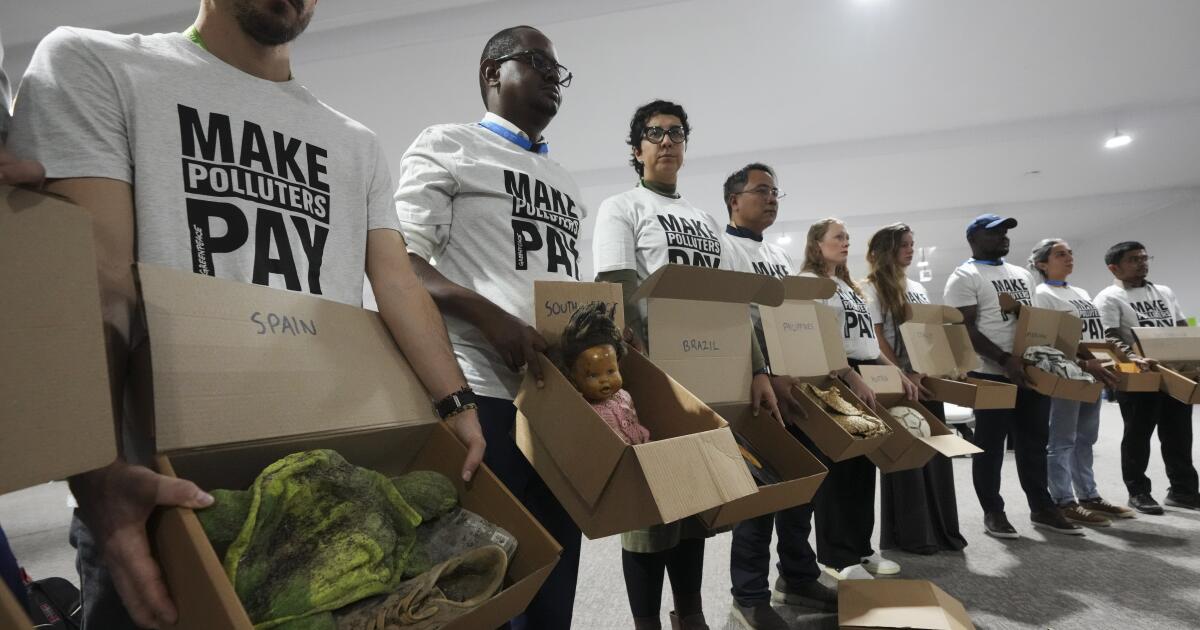Nestled alongside the Pearl River in southern China, you’ll find rows of white concrete buildings bustling with activity. These gritty workshops have become a powerhouse in the global industry, producing affordable clothing that quickly makes its way to homes and small businesses across the globe. Interestingly, these shipments dodge tariffs and evade customs inspections.
Inside these factories, workers toil away for as little as $5 an hour, sometimes putting in grueling shifts of 10 hours or more. For $130 a month, they cram into tiny dorms perched above sewing machines and heaps of fabric. “It’s hard work,” shared Wu Hua, who stitches pants seven days a week in Guangzhou’s vast urban sprawl that lines the Pearl River.
E-commerce behemoths have forged a strong, direct link to workers like Wu, revolutionizing retail and economies worldwide.
In recent years, the volume of duty-free shipments to the U.S. has skyrocketed beyond tenfold since 2016, hitting four million packages daily last year. The European Union has seen even more explosive growth, with 12 million parcels dispatched daily. Similar trends are noted in developing markets like Thailand and South Africa.
However, this surge has sparked a global backlash. On February 4, President Trump ordered an end to the duty-free entry of parcels valued up to $800, intending them to face inspection. This decision was temporarily paused to avoid immediate chaos at airports as parcels began stacking up for scrutiny.
Since stepping into office mere weeks ago, Trump has unleashed a barrage of trade actions, including directives for new tariff strategies to tackle various trade barriers. But the anticipated clampdown on duty-free shipments might stand as one of the most significant moves. These shipments had previously slipped through the nets of not only new tariffs but many others that have built up over the years.
The U.S. isn’t alone in this endeavor. Following the American lead on cracking down on these low-value parcels, South Africa slapped a 45% tariff even on minor clothing imports last summer, and Thailand withdrew tax exemptions on low-cost parcels, though they still permit tariff-free entry for goods under 1,500 Thai baht. In a similar vein, the European Commission recently suggested that the 27 nations within the EU stop allowing duty-free treatment for parcels below 150 euros.
Each country has its rationales. President Trump sees these unchecked parcels as a possible gateway for illicit substances like fentanyl into the U.S. Meanwhile, the European Commission is concerned about product safety, counterfeit issues, and leveling the playing field for competition. South Africa and Thailand’s measures aim to protect local merchants.
Michael McGrath, a European commissioner, stated, “We have a duty to ensure that goods entering our market are safe and that all traders respect consumers’ rights.”
Southern China, particularly around Hong Kong, has long been an epicenter of affordable manufacturing, especially for clothing. With the boom of e-commerce, the demand for such shipments is steadily climbing.
Guangzhou is now recognized as the nexus for these low-value parcels. Across its expansive urban landscape, fast fashion garments are manufactured in cement buildings often stacked with sewing workshops and living quarters.
Leading the charge are Chinese e-commerce juggernauts Shein and Temu, who together capture a significant chunk of this market. Operating from substantial offices in Guangzhou, these companies efficiently orchestrate their supply chains. Even Amazon has dipped its toes with Haul, a venture for Chinese shipments.
Yet, the de minimis industry isn’t confined to just Guangzhou or to clothing alone. Yiwu, a city some 600 miles northeast with a sprawling wholesale market, plays a pivotal role, channeling exports of toys, hats, and other small items from around the Yangtze River delta.
Shein, specifically, has redefined the game by connecting remote customers with nimble factories capable of swiftly producing a diverse array of goods. Collaborating with around 5,000 workshops nationwide, Shein dispenses with the need for physical stores and inventory.
According to Shein’s website, “At Shein, we have reimagined the supply chain by empowering thousands of small and medium-sized businesses, giving them full insight into what our customers want and need.”
However, some workshop owners in Guangzhou say Shein places onerous demands on them. Li Zhi experienced this first-hand four years ago when she supplied garments to a Shein contractor, but the collaboration was short-lived. “Shein demands high quality but offers low prices,” she remarked, sorting through lace at her workbench.
Li has since pivoted to selling to local wholesalers in China who offer better prices. Still, business isn’t easy. A labor shortage has driven up the price of day wages to nearly $70 from $48, just four years ago.
Today, nearly two-thirds of Chinese 18-year-olds pursue higher education, a sharp increase from just 10% in 2000. This shift means fewer young workers are willing to do factory work. “Business is deteriorating every year,” Li laments, reminiscing how now, “there are fewer and fewer workers — mostly those born in the ’70s and ’80s.”
Should Trump solidify his stance and dismantle the de minimis rule, products that currently bypass tariffs would face basic tariffs from 3 to 30%, along with a 7.5% duty introduced in his first term and an additional 10% now slapped on all imports from China. On top of that, expect customs fees ranging from $5 to $20 per package.
Shein argues that its partners pay workers double the local minimum wage. Meanwhile, Temu claims that nearly 60% of its U.S. sales now stem from American warehouses, with tariffs duly applied.
The competitive edge of China’s de minimis industry extends beyond tariff avoidance. Over 90% of China’s cotton is sourced from Xinjiang, a region scrutinized by Western governments. Many have restricted or outright banned imports of goods with Xinjiang origins due to concerns over forced labor among the Uyghur population.
Legally, it falls on households and small businesses purchasing these parcels to verify they aren’t supporting Xinjiang cotton, but Western regulators are hesitant to prosecute. In contrast, larger retailers importing in bulk usually adhere to regulations regarding Xinjiang-sourced materials.
Back in Guangzhou, workshop operators often have no knowledge of their textile’s origins. Yun Congping, who supplies the Thai market, highlighted the dependence on this supply chain: “If we don’t accept the deals to supply low-priced exports,” he reasons, “there’s nothing else to do.”
Contributions to this report came from Jordyn Holman in New York and research by Li You.
















